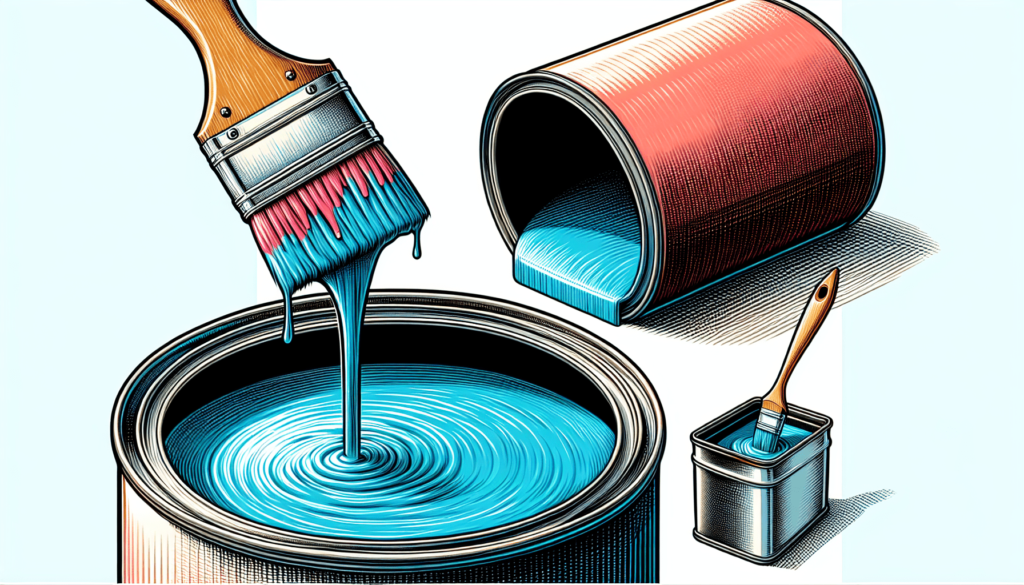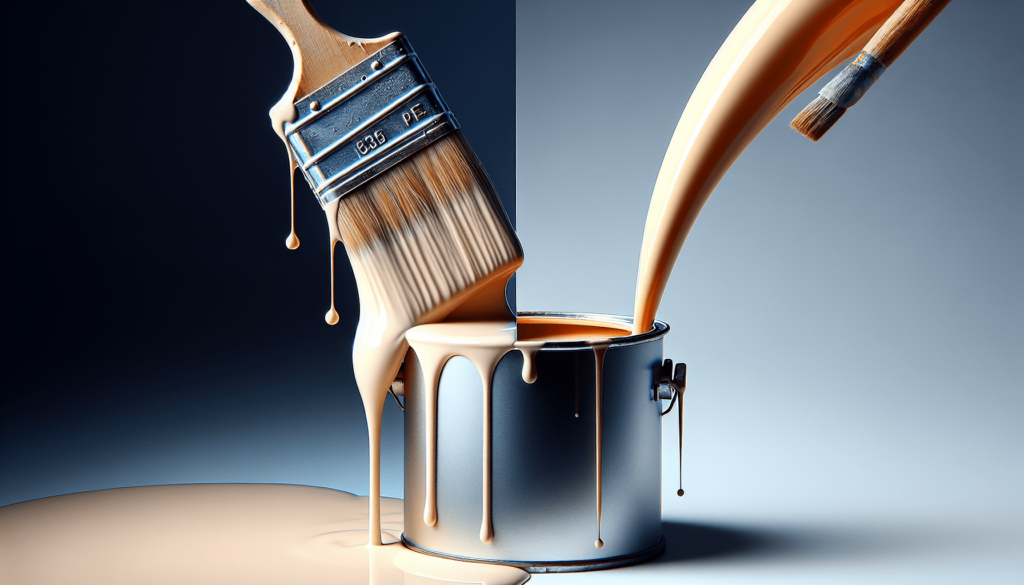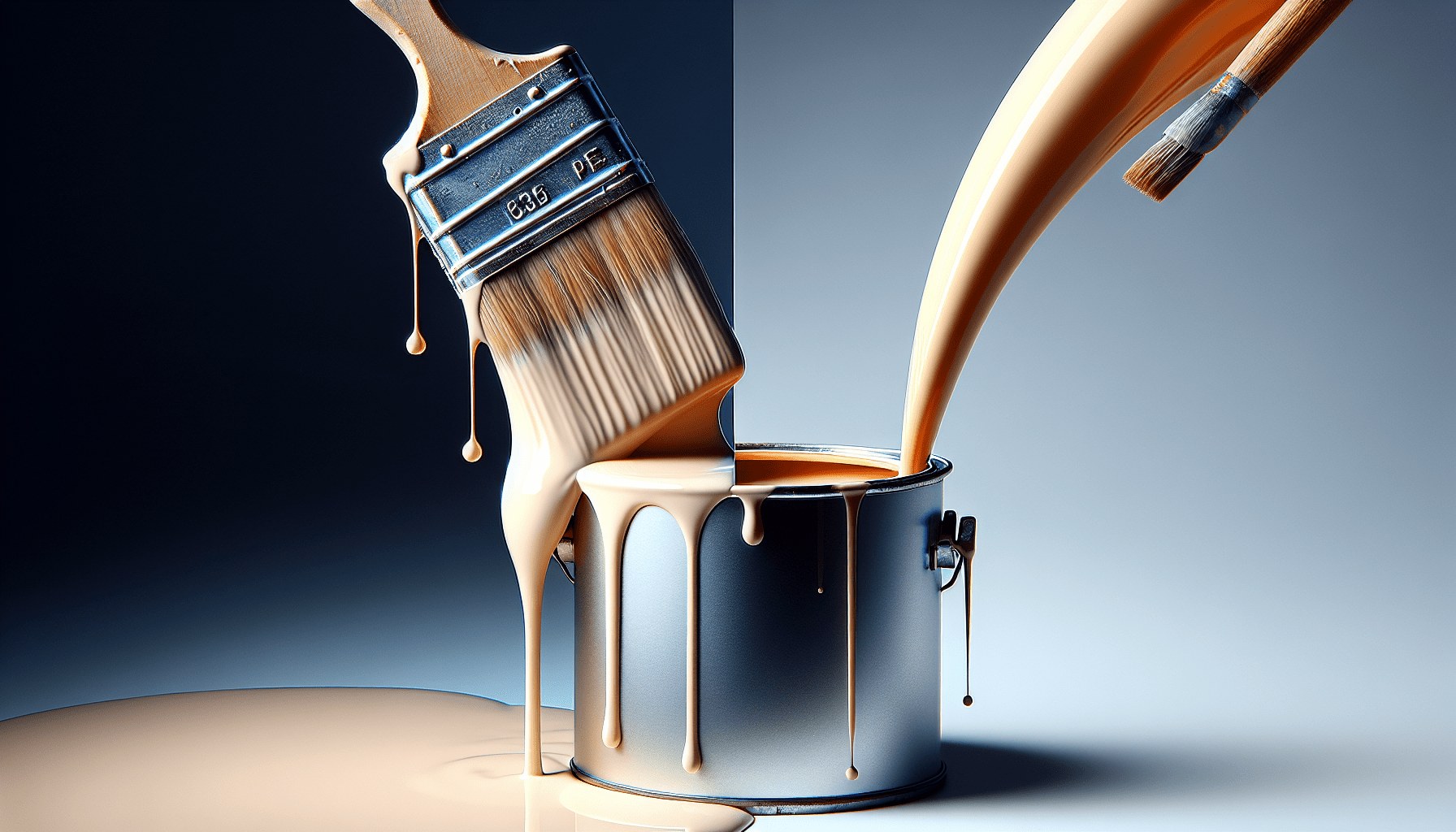In the realm of home improvement projects, the question of whether or not to thin latex paint often arises. The answer might be of particular interest to both seasoned DIY enthusiasts and novice painters alike. This article aims to shed light on this matter by examining the process of thinning latex paint and its potential benefits. By the end, you will have a clearer understanding of whether thinning latex paint is a viable option for your next painting endeavor.

What is latex paint?
Latex paint, also known as water-based paint, is a type of paint that uses water as its main solvent. It is commonly used for painting walls and ceilings, both in residential and commercial settings. Unlike oil-based paints, latex paints dry quickly, have little to no odor, and are easier to clean up with just soap and water. This makes latex paint a popular choice for many homeowners and professionals alike.
Why would you want to thin latex paint?
There are several reasons why you might want to thin latex paint. Thinning the paint can help achieve a smoother finish on surfaces, especially when using a brush or roller. It allows the paint to flow more easily, reducing the appearance of brush marks or roller stipple. Thinning is also beneficial when using a paint sprayer, as it helps the paint atomize properly and provides better coverage.
When should you thin latex paint?
Knowing when to thin latex paint is crucial to achieve the desired results. One factor to consider is the thickness of the paint. If the paint appears too thick or difficult to spread evenly, thinning it can make it easier to work with. Additionally, the desired application method plays a role. If you plan to use a paint sprayer, thinning the paint is necessary to ensure proper atomization and prevent clogs.
How to determine if latex paint needs thinning
There are two common methods to determine if latex paint needs thinning: the viscosity test and the stirring test. The viscosity test involves dipping a viscosity cup into the paint and observing how quickly it drains. If the paint flows too slowly, it may be too thick and require thinning. The stirring test involves using a stir stick or paddle to stir the paint. If the paint does not flow smoothly off the stick and clumps together, it may be a sign that thinning is necessary.

Methods to thin latex paint
There are various methods to thin latex paint, depending on your preference and the specific product you are using. The most common methods include using water, a latex paint conditioner, Floetrol, Penetrol, or a paint sprayer.
Step-by-step guide to thin latex paint with water
-
Gather materials: You will need latex paint, a clean container, a stir stick, and water.
-
Prepare the paint: Ensure the paint can is properly sealed and mix it with a stir stick to break up any settled pigments.
-
Add water gradually: Start by adding a small amount of water, typically around 5% of the total paint volume. Mix the paint well.
-
Mix thoroughly: Stir the paint vigorously to ensure the water is evenly distributed. Continue adding water gradually until you achieve the desired consistency.
-
Test the consistency: Dip a brush or roller into the thinned paint and apply it to a test surface. Assess the coverage and ease of application. If needed, add more water and remix until you achieve the desired results.
Step-by-step guide to thin latex paint with a conditioner
-
Choose the right conditioner: Select a latex paint conditioner that is compatible with your paint and application needs.
-
Add the conditioner: Follow the manufacturer’s instructions for the recommended amount of conditioner to add to your paint.
-
Mix thoroughly: Stir the paint and conditioner mixture well to ensure they are fully incorporated.
-
Test the consistency: Apply the thinned paint to a test surface using a brush or roller. Evaluate the coverage and ease of application. Adjust the amount of conditioner if necessary to achieve the desired results.
Step-by-step guide to thin latex paint with Floetrol
-
Get the necessary materials: Gather latex paint, Floetrol paint conditioner, a clean container, a stir stick, and water (optional).
-
Prepare the paint: Ensure the paint can is properly sealed and mix it using a stir stick to break up any settled pigments.
-
Add Floetrol: Follow the manufacturer’s instructions to determine the recommended amount of Floetrol to add to your paint.
-
Mix thoroughly: Stir the paint and Floetrol mixture well to ensure proper mixing and distribution of the conditioner.
-
Test the consistency: Apply the thinned paint to a test surface to assess coverage and ease of application. If needed, adjust the amount of Floetrol and remix until desired results are achieved.
Step-by-step guide to thin latex paint with Penetrol
-
Gather the required supplies: You will need latex paint, Penetrol paint additive, a clean container, a stir stick, and water (optional).
-
Prepare the paint: Ensure the paint can is properly sealed and mix it using a stir stick to break up any settled pigments.
-
Add Penetrol: Follow the manufacturer’s instructions to determine the recommended amount of Penetrol to add to your paint.
-
Mix thoroughly: Stir the paint and Penetrol mixture well to ensure proper incorporation of the additive.
-
Test the consistency: Apply the thinned paint to a test surface using a brush or roller. Evaluate the coverage and ease of application. Adjust the amount of Penetrol if needed to achieve the desired results.
Tips and precautions for thinning latex paint
- Avoid over-thinning the paint, as it may affect the durability and coverage.
- Gradually add thinning agents, whether it’s water, conditioner, Floetrol, or Penetrol, to ensure you achieve the desired consistency without thinning it too much.
- Follow the manufacturer’s instructions for the specific paint and thinning agent you are using.
- Use appropriate safety measures, such as wearing protective gloves and eyewear, when handling and mixing paint and thinning agents. Follow any specific safety precautions mentioned by the manufacturer.
Thinning latex paint can be a helpful technique to achieve better results in your painting projects. By understanding the reasons behind thinning, determining when it’s necessary, and following the step-by-step guides for various thinning methods, you can achieve a smoother finish and improved application with your latex paint. Remember to take the necessary precautions and always follow the manufacturer’s instructions for the specific products you are using.



